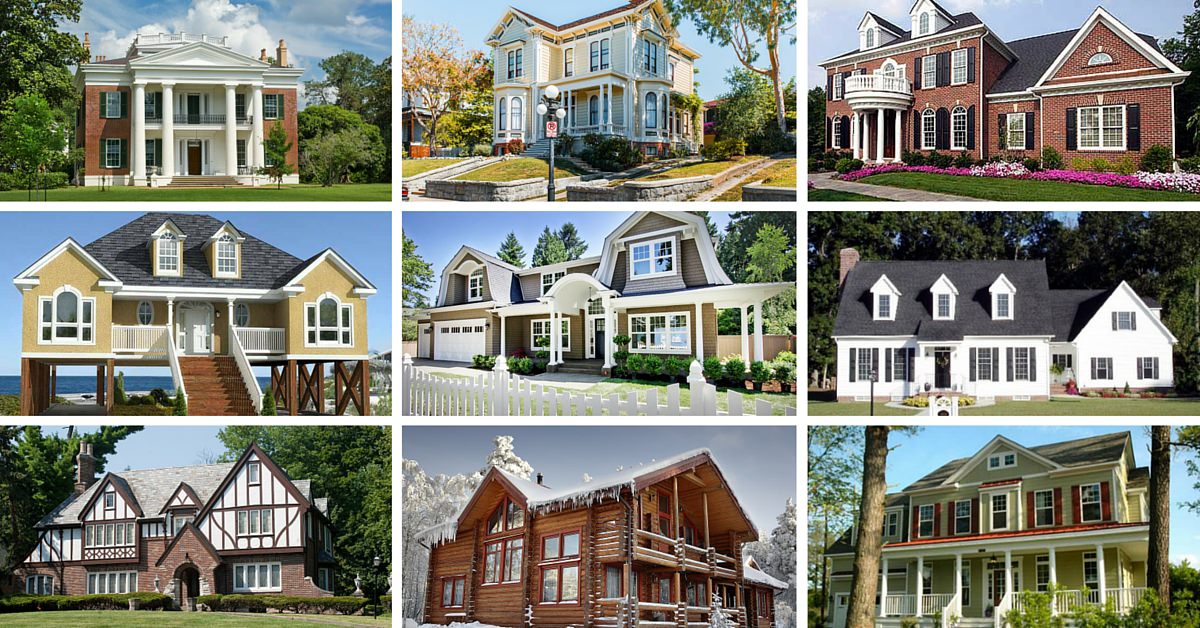There are many different types of architectural styles and each has its characteristics. Whether you’re talking about architects in Sun Valley, Idaho or Frank Lloyd Wright, the architectural styles discussed in this article are known worldwide.
You might be looking for your next vacation home in Scottsdale Arizona or simply reading because you’re a scholar eager to understand the various types of architecture. Regardless, there’s something in here for you. Continue reading to learn more about the most popular types of architectural styles.
Classical Architecture
Classical architecture is characterized by symmetry, balance, and proportion. You can find this style associated with ancient Greek and Roman architecture and examples include the Parthenon and the Colosseum.
Classical architectural style was used in ancient Greece and Rome. It consists of three elements: the Doric, Ionic, and Corinthian orders.
The Doric order is characterized by its simple, sturdy columns. The Ionic order has scrolls or volutes, while the Corinthian order has an elaborate leaf motif. Each order has its own distinctive features.
Classical architecture has had a lasting influence on Western architecture and is still used in many buildings today. It is often associated with tradition, stability, and grandeur.
Gothic Architecture
Gothic architecture is known for its pointed arches, ribbed vaults, and flying buttresses. Some examples include Notre Dame Cathedral and the Tower of London.
Gothic architecture had a profound influence on subsequent architectural styles, including the Renaissance and the Gothic Revival of the 19th century. It is still admired today for its beauty, elegance, and grandeur.
Renaissance Architecture
Emerging in Italy in the 15th century, Renaissance architecture contains classical forms and emphasizes symmetry and proportion. Examples of Renaissance architecture include the Palazzo Vecchio and the Basilica di Santa Maria Novella in Florence.
- Renaissance architects looked to the classical orders for inspiration. This included the Doric, Ionic, and Corinthian orders, which had been used in ancient Greece and Rome.
- Renaissance buildings are known for their sense of balance and harmony. This is achieved through the use of symmetrical arrangements of windows, doors, and other architectural elements. Symmetry and proportion are important features of Renaissance architecture.
- Renaissance architects were famous for constructing dome structures. One example is the dome of the Florence Cathedral in Italy, designed by Filippo Brunelleschi.
- Renaissance architecture uses pilasters for decoration. Pilasters are flattened columns. Pediments are also common. They are triangular structures that sit atop columns or pilasters.
- Renaissance architects used ornate decoration to adorn buildings and create a sense of grandeur. This decoration included elaborate stone carvings, frescoes, and stucco work.
Baroque Architecture
Baroque architecture began in the 17th century. It’s best known for its ornate details, curves, and overall grandiose statements. You might be familiar with the Palace of Versailles and St. Peter’s Basillica in Rome.
- Curved forms: Baroque architects used curved forms, such as the oval, to create a sense of movement and dynamism in their designs.
- Rich ornamentation: Baroque buildings are characterized by their elaborate ornamentation, including intricate stone carvings, stucco work, and frescoes.
- Use of light: Baroque architects used light and shadow to create dramatic effects, such as the use of chiaroscuro in painting.
- Grandeur and scale: Baroque buildings were often designed on a grand scale, with large domes, sweeping staircases, and massive facades.
- Dramatic facades: Baroque facades are often characterized by their dramatic use of curves, broken pediments, and dynamic sculptural elements.
Rococo Architecture
Rococo architecture emerged in the 18th century and its delicate details, pastel colors, and asymmetric components are its staples. The Palace of Caserta and St. Catherine’s Palace in Russia are two of the most notable examples of this architectural style.
- Asymmetrical designs: Rococo architecture is known for its asymmetrical designs, which create a sense of movement and playfulness.
- Ornate decoration: Rococo buildings are characterized by their ornate decoration, which often features curving forms, delicate stucco work, and elaborate frescoes.
- Rococo architects desired to create structures that seemed light and delicate. This was opposite to the large and grandiose structures from the Baroque period.
- Rococo architecture frequently incorporates shell and scroll motifs. These decorative elements create a feeling of movement and lightheartedness.
- Pastel colors: Rococo buildings are often painted in pastel colors, which add to their delicate and whimsical appearance.
Neo-classical Architecture
Neoclassical architecture rose emerged in vogue around the 18th century. It is most known as a revival of classical forms and it places an emphasis on simplicity and symmetry. You can see examples of this type of architecture in the US Capitol and the Brandenburg Gate in Berlin.
- Neoclassical architects used classical forms and motifs in their designs. Examples include columns, pediments, and friezes. These were common in ancient Greek and Roman architecture.
- Neoclassical buildings are known for their sense of order and balance. This is achieved by using symmetrical arrangements of windows, doors, and other architectural elements.
- Simple and restrained decoration: Neoclassical architects sought to create buildings that were simple and elegant, with minimal decoration and ornamentation.
- Neoclassical buildings often feature triangular pediments. These pediments emphasize the entrances and give a feeling of grandeur.
- Monumentality: Neoclassical architects often designed buildings on a grand scale, with massive facades, sweeping staircases, and imposing columns.
Art Nouveau Architecture
Art nouveau arose in the late 19th century. It was characterized by flowing lines, geometric components, and an emphasis on natural forms. These elements combined to create a diverse style. Examples include the Casa Batilo in Barcelona and the Hotel Tassel in Brussels.
- Organic forms: Art Nouveau architects created buildings with natural, organic qualities. They often used curves and asymmetrical forms to create a sense of movement and fluidity.
- Ornamental motifs: Art Nouveau highlights ornamental motifs that often include floral and plant features, as well as stylized figures and animals.
- Art Nouveau architects employed new materials like glass and steel. This enabled them to construct lighter and more transparent buildings.
- Art Nouveau architects were renowned for their creativity. They used curved glass to make impressive stained-glass windows.
- Emphasis on decoration: Art Nouveau architecture is often highly decorated, with intricate detailing and elaborate ornamentation.
Modern Architecture
Modern architecture rose to popularity in conjunction with modernity in the early 20th century. It champions function and the use of technology. You can see this style at work in the Bauhaus school in Germany and the Guggenheim Museum in New York.
Modern architecture favors technology and solving the needs of people rather than the aesthetic aspects. It also emphasizes the use of new materials, such as steel, concrete, and glass, which were not available to earlier generations of architects.





